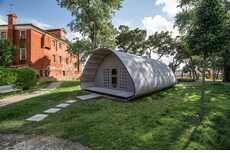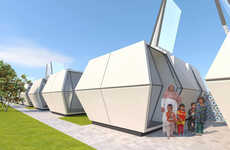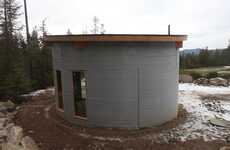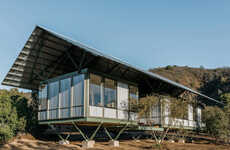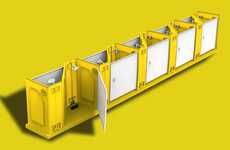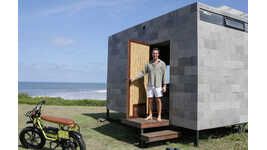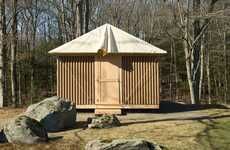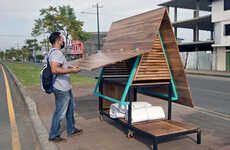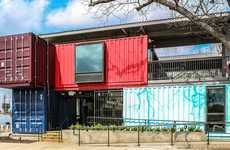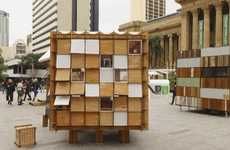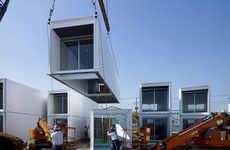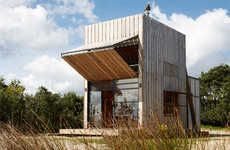
The Pallet House by I-Beam Design Offers Low-Cost Housing
Katherinev123 — December 12, 2011 — Eco
References: i-beamdesign & jetsongreen
Designed by I-Beam Design, the Pallet House offers an eco-friendly housing option that would benefit people living in refugee camps. According to I-Beam Design's site, the average life span of a person living in a refugee camp is seven years, although some may even exceed 50 years. As such, the company strives to replace the typical tents that are provided for refugees with the Pallet House, an alternative and sustainable living option.
In a press article by the Southern Methodist University about the Pallet House, it was stated that this kind of housing could accommodate 84 percent of the world's refugees with only a year's supply of recycled pallets from the United States. Each 250-square-foot Pallet House is made from about 100 recycled pallets and requires 4 to 5 workers to assemble using normal hand tools. What's more, according to Jetson Green, it doesn't take longer than a week to complete one home.
In a press article by the Southern Methodist University about the Pallet House, it was stated that this kind of housing could accommodate 84 percent of the world's refugees with only a year's supply of recycled pallets from the United States. Each 250-square-foot Pallet House is made from about 100 recycled pallets and requires 4 to 5 workers to assemble using normal hand tools. What's more, according to Jetson Green, it doesn't take longer than a week to complete one home.
Trend Themes
1. Eco-friendly Housing - Disruptive innovation opportunity: Develop sustainable and low-cost housing solutions for refugee camps to improve living conditions and reduce environmental impact.
2. Recycled Materials - Disruptive innovation opportunity: Create innovative uses for recycled materials, such as pallets, to construct affordable and durable homes for refugees.
3. Efficient Construction - Disruptive innovation opportunity: Streamline construction processes to rapidly build housing units in refugee camps, minimizing time and labor requirements.
Industry Implications
1. Architecture and Design - Disruptive innovation opportunity: Collaborate with architects and designers to create sustainable and scalable housing solutions for refugee camps.
2. Construction and Building Materials - Disruptive innovation opportunity: Develop new construction techniques and materials that utilize recycled resources to build affordable housing for refugees.
3. Humanitarian Aid and Nonprofit - Disruptive innovation opportunity: Partner with humanitarian organizations to implement eco-friendly housing projects in refugee camps and enhance living conditions.
5.2
Score
Popularity
Activity
Freshness


